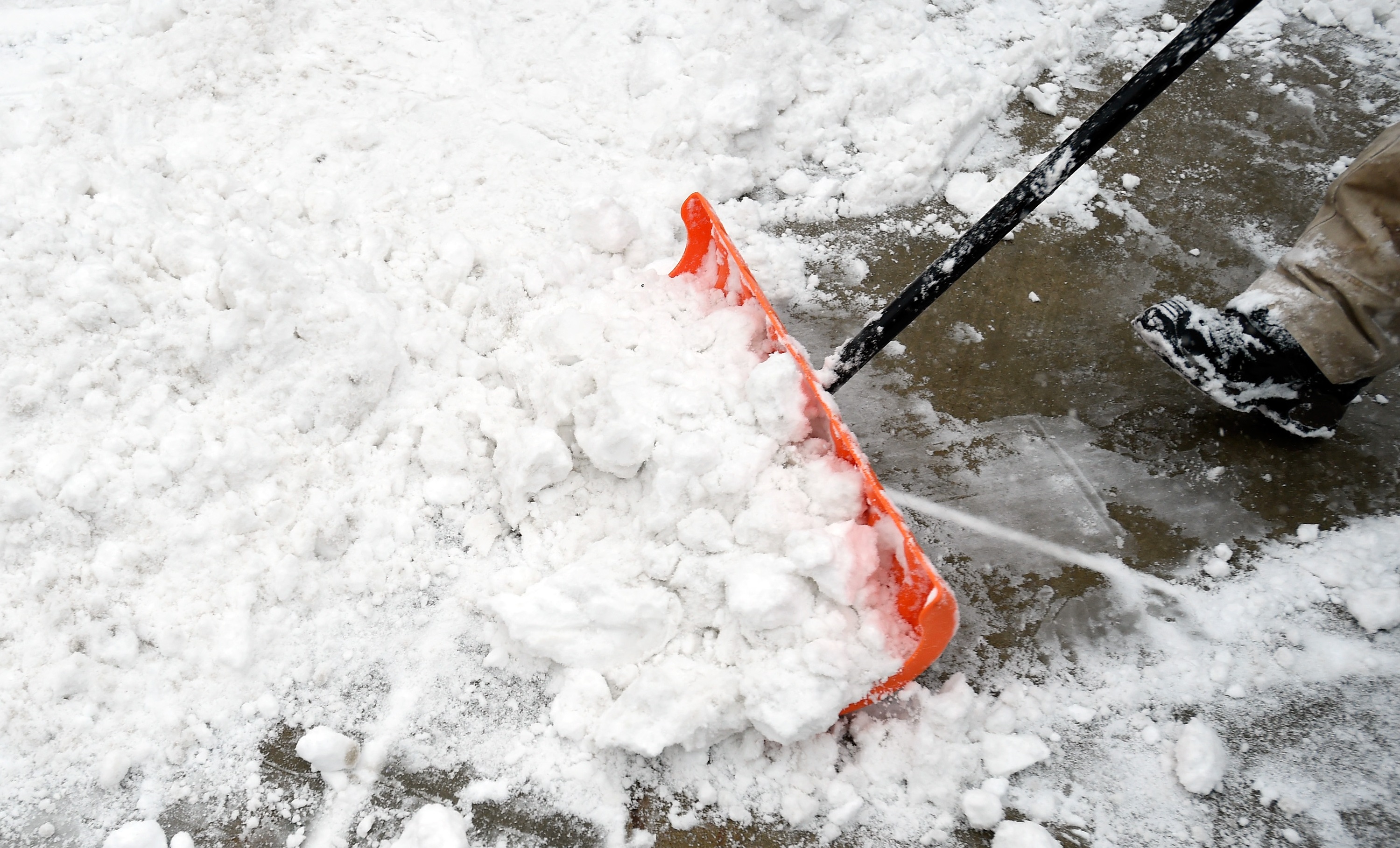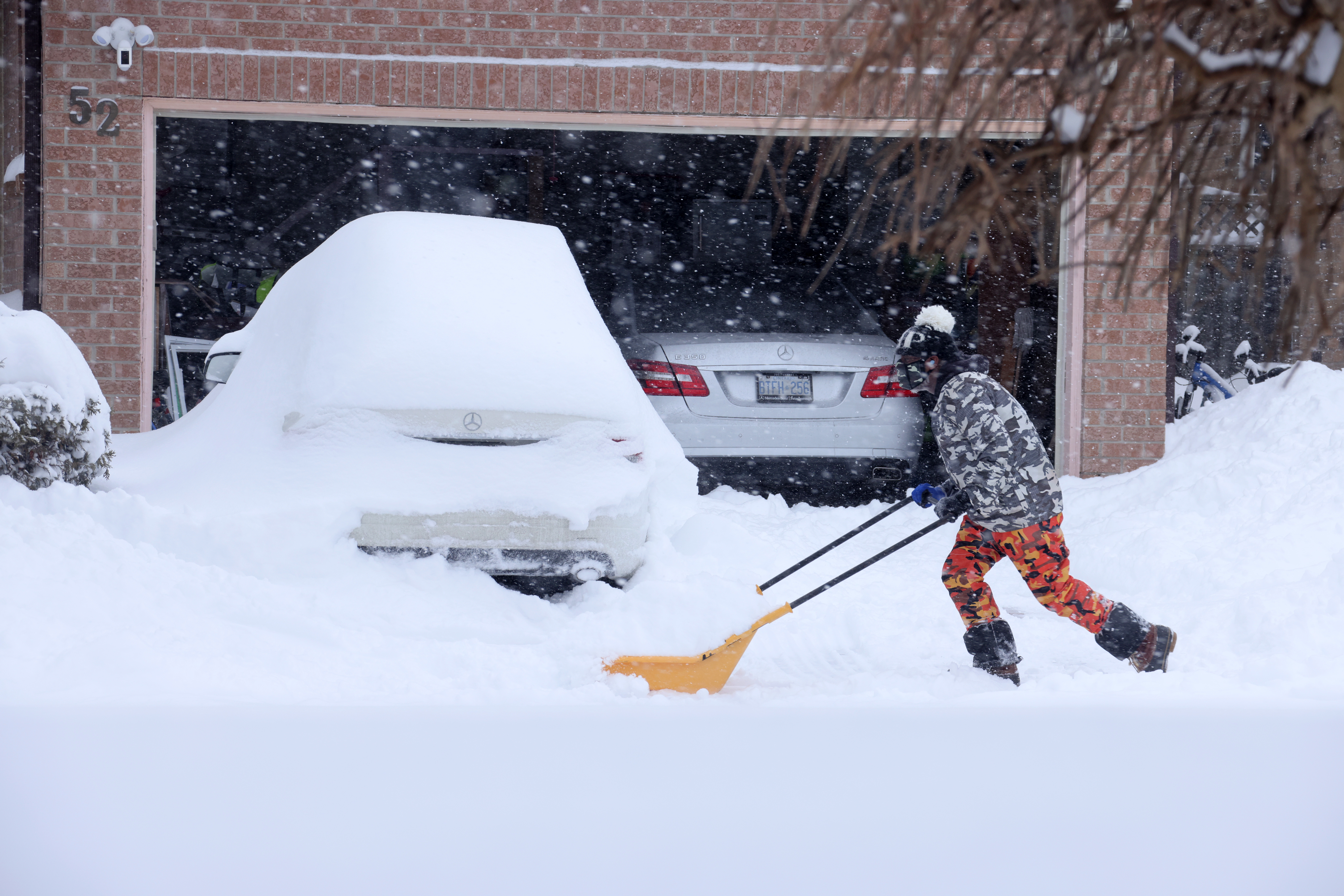How to choose a snow shovel
It'll shift snow from the deck, stairs or porch

As someone who has lived in Utah my entire life, and also grew up without a snow plow or snow blower, a snow shovel was and is still an essential tool come winter. Even with the luxury of an available snow blower, there are still some snow removal tasks that only some good ol’ elbow grease and a snow shovel will conquer. Like removing snow from a deck, stairs or porch, or moving particularly heavy or wet snow, something many of even the best snow blowers have issues with.
For these tasks, a snow shovel is the right tool for the job. Not all snow shovels are created equal though. Having the wrong kind of snow shovel for the job can make already laborious work even more difficult. Learning about the blade, the ergonomics of the shaft and handles, and even the weight of the shovel make a huge difference in snow removal performance.
This expert guide will help you find the right snow shovel for your region, the type of snow you typically receive, and ultimately the best snow shovel for your needs. Read on to find out how to choose the right snow shovel for you.
How to choose a snow shovel
I caught up with Darren Smith, Owner of GotGrass Outdoor Maintenance, to share some top tips from an industry expert on the type of things to look for when choosing a snow shovel.
Darren Smith is the owner of GotGrass Outdoor Maintenance in Ogden, Utah. Darren has over 10 years of landscaping experience and has owned his GotGrass Outdoor Maintenance since 2018.
1. Choose the right blade shape
The best way to think about the type of blade you need is how you plan on using your snow shovel. If you are clearing off a porch, deck or walkway, and can simply push the snow off the area, you should consider a pushing blade compared to a traditional scoop blade. “For porches and decks, we use pusher blades compared to standard snow shovels. It makes for easy work and doesn’t damage the deck,” shares Smith. Pushing blades are wider and resemble more of a handled plow as opposed to a shovel. Like the name suggests, it is designed to push snow, not scoop and pile.
Scoop blades on the other hand are designed to lift and pile snow. These blades are flatter with a slight curve, or scoop that helps the blade hold snow as you shovel and lift. These are a great choice for lifting and moving both light and heavier snow that has piled up. “A pusher can lift snow too, but because of the shape, it’s probably going to spill out everywhere, making it more difficult compared to a shovel,” said Smith.
Finally, if you need a shovel for cutting into plowed snowbanks, like the kind that plows tend to leave in the mouth of your driveway, a flat shovel is a smart choice. The flat blade will help cut through the packed snow, helping you break it up into lighter pieces, lift and remove it.
Sign up to receive the latest news, reviews, buying guides and deals direct to your inbox
2. Pick the correct blade size
It might seem like a smart idea to get the largest blade possible. A bigger blade equals more snow removal, right? Well, not necessarily. If you get a blade that is too big, the amount of snow you pick up may be too heavy for your ability. Sure, with a smaller blade, it may take more time to remove snow, but you don’t want to hurt yourself attempting to lift an amount of snow that is too heavy for you.
“I would suggest most people should shoot for a medium sized blade, about 20 or so inches,” said Smith. He continued, “That will be good for snowfall that’s six to eight inches, to lift and remove it without it being too heavy for an average person.”
Typically, you’ll see shovel blades that range from 18-inches to 30-inches wide. When you’re looking for a shovel, try using it first to see what amount of snow scooping and piling you’re able to handle.

3. Opt for a comfortable weight
There is no magic formula to this. It largely depends on personal preference, but, like the size of the blade, you should also consider the overall weight of the entire shovel. If you are a smaller individual, a smaller shovel that is less heavy – under three pounds – with a smaller blade may be more suitable. This Emsco Bigfoot 18” Shovel listed on Amazon is a great example of a lightweight snow shovel that weighs under three pounds. Again, you’ll want to get a few shovels in your hand and test out what feels best.
4. Select a design that suits you
The difference between a straight snow shovel shaft and a curved one is negligible. Again, this comes down to personal preference. The idea behind a bent shaft is to reduce the amount of bending forward an individual does while shoveling. But it’s not a one-size-fits-all design. Depending on how tall you are, and your personal weight-lifting capabilities, a straight handle may be more comfortable.
5. Look out for D-grip
Reviews
Echo eForce DPB-2500 review: a leaf blower as a snow removal tool?
Opinel Hand Pruning Shears review: are these the world’s most stylish secateurs?
STIHL HSA 60 Hedge Trimmer review: a battery-powered hedge trimmer that "gets the job done"
STIHL FSA 200 R String Trimmer review: quirky yet powerful, efficient and battery-powered
Husqvarna Combi Switch 330iK review: A versatile, all-in-one lawn tool
ENHULK 58V 16” String Trimmer review
Husqvarna Hedge Master 320iHD60 review: a cordless hedge trimmer on a mission to master hedges
The most popular grip you’ll see on most snow shovels is what’s known as the “D-grip” because the shape looks like the letter D. There are still shovels out there without a D-grip on the end, or use a T grip, but we recommend a snow shovel with a D-grip. When you have a big job, a D-grip is simply more comfortable to hold and easier on your hand.
There are some snow shovels that feature two D-drips, one for each hand, like the ErgieShovel on Amazon. The secondary handle on your forward hand is adjustable to suit your preference. The idea behind this is both better grip and better leverage for less strain on your back. Keep in mind though it is a little heavier than other snow shovels, which may become tiring in the long run.

6. Consider what material you need it made from
The most common materials you’ll find are polycarbonate (plastic) and aluminum (metal). Plastic is more lightweight and affordable, but not as durable, and not as suitable for breaking up frozen snow as aluminum. “We use poly (plastic) blades. They are lightweight and when we do residential work, like clearing decks, they don’t gauge or scrape the wood,” said Smith. Metal is a great option for breaking up ice and snowpack left behind by plows. But aluminum shovels are heavier, more expensive, and snow has a tendency to stick to them more than a plastic blade.
Again, this comes down to the type of job you’ll be performing. If you’re constantly removing packed snow from the mouth of your driveway left behind from the city snow plow, you’ll want a metal shovel to break that up and remove it. But for removing pretty much all other snow, a plastic shovel will suffice, and save you some money too.

With a Bachelor's Degree in Communications and Media from Weber State University, Jonathan Knoder is all about Smart Home and AV tech. He currently works as a Content Manager for AvantGuard Monitoring Centers in Utah. Jonathan has written extensively and at great length about yard care and snow blowers for Top Ten Reviews, and this is his subject area.
